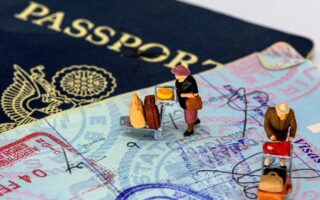Social Security No-Match Letters are Back!
By Kevin M. Mosher • Apr 11, 2019
The Social Security Administration (SSA) decided as of March 2019 to resume sending out Employer Correction Request Notices, more commonly known as “No-Match Letters.” These No-Match letters are sent to employers the SSA has identified as having at least one name and Social Security Number (SSN) combination submitted on wage and tax statement (Form W-2) that do match the SSA’s records. The purpose of the letter is to advise employers corrective action is needed in order for the SSA to properly post employees’ earnings to the correct record.
While employers that receive a No-Match letter may panic because they believe they will face some sort of penalty, audit or a combination of the two, the SSA wants employers to know that is not the intent. In fact, the SSA makes it clear in the letter “does not imply that you or your employee intentionally gave the government wrong information about the employee’s name or SSN. This letter does not address your employee’s work authorization or immigration status.” The SSA recognizes there could be a number of reasons why the reported names and SSNs may not agree with its records, including: typographical errors, unreported name changes, and inaccurate or incomplete employer records. Thus, the letter serves as a notice that the employer needs to correct information submitted to the SSA, nothing more should be read into the letter.
EMPLOYER DOS AND DONT’S AFTER RECEIVING A NO-MATCH LETTER
The No-Match letter instructs employers how to rectify the discrepancy between the employee’s name and SSN. It first directs employers to the Business Services Online (BSO) to view the names and SSNs that could not be matched by the SSA. Once the employer has identified the error causing the discrepancy, the necessary corrections should be submitted via Form W2-C within 60 days of receipt of the No-Match letter. Moreover, going forward the letter encourages employers to use the free Social Security Number Verification Service through BSO that allows employers to verify employees’ names and SSNs in the SSA’s records before annual submission of Form W-2. Employers should also ensure that they have proper information and verification documentation for all employees, including those whose name and SSN did not match, to ensure compliance, not only with SSA guidelines, but immigration as well. Receipt of a No-Match letter does not suggest the receiving employer will be audited, but it is better to have all documentation and information to ensure that any subsequent audit will go smoothly.
DON’T ASSUME THE NO-MATCH LETTER IS BAD, BUT….
As noted above, receipt of a No-Match letter should not cause an employer to go into a frenzy or assume that an employee has lied about his or her name and/or SSN. The SSA specifically notes that receipt of a No-Match letter does not address any employee’s work authorization or immigration status, so the letter is not implying in any way the employee is not authorized to work in the United States. Further, the SSA also notes that the letter should not be used to “take any adverse action against an employee, such as laying off, suspending, firing, or discriminating against that individual, just because his or her SSN or name does not match our records.”
This is all to say that receipt of a No-Match letter should signal the employer that it needs to rectify discrepancies between the name and SSN of one or more employees. By way of investigating where the error occurred, an employer will have a better idea if it was just an error or misunderstanding that only requires a correction or if there is a bigger problem, such as an issue with the employee’s work status. Either way, the No-Match letter should just be the notification that an employer needs to do some further research and should not be treated as a warning to an employer that an employee lied or should not be employed.
YOU RECEIVE A NO-MATCH LETTER. NOW, WHAT TO DO?
First, investigate your records to see if there was a clerical mistake. If so, respond to SSA to correct the mistake as indicated (procedurally) on the No-Match Letter.
Second, if there was no clerical mistake, contact the employee and have the employee check their Social Security Card for accuracy to see if they can explain the discrepancy.
Third, if the employee can’t explain it, send the employee to the SSA to correct the error in the system. Give the employee a defined time period to respond to you (ideally within 60 days so you can report any fixes). If the employee brings you back information regarding the correction then you should report it to the SSA.
Fourth, if the employee ignores you and doesn’t respond to your request to fix the error, it could be circumstantial evidence that they used a false Social Security number/card to obtain work authority. Check the I-9. If the employee used the Social Security Card as Section 2/List C proof of work authority you may find that this circumstance, in conjunction with others, calls into question the person’s authority to work in the U.S. If so, it could provide information to you that the person isn’t authorized to work in the U.S. or hasn’t provided proof of such authorization to you that they can work in the U.S. Once you have such information federal law may prohibit you from employing people. At a minimum, you take on risk that you are employing someone unlawfully.
If you would like to view a sample of a SSA Employer Correction request you can find it HERE. If you have any questions regarding the SSA’s No-Match letter or what steps you should take if you receive one, please contact your Thompson Coe attorney at (651) 389-5000 or at myHRgenius@thompsoncoe.com. You can also find additional information and tips for your company and HR professionals at https://myhrgenius.co.
Thompson Coe and myHRgenius Tip of the Week is not intended as a solicitation, does not constitute legal advice, and does not establish an attorney-client relationship.










